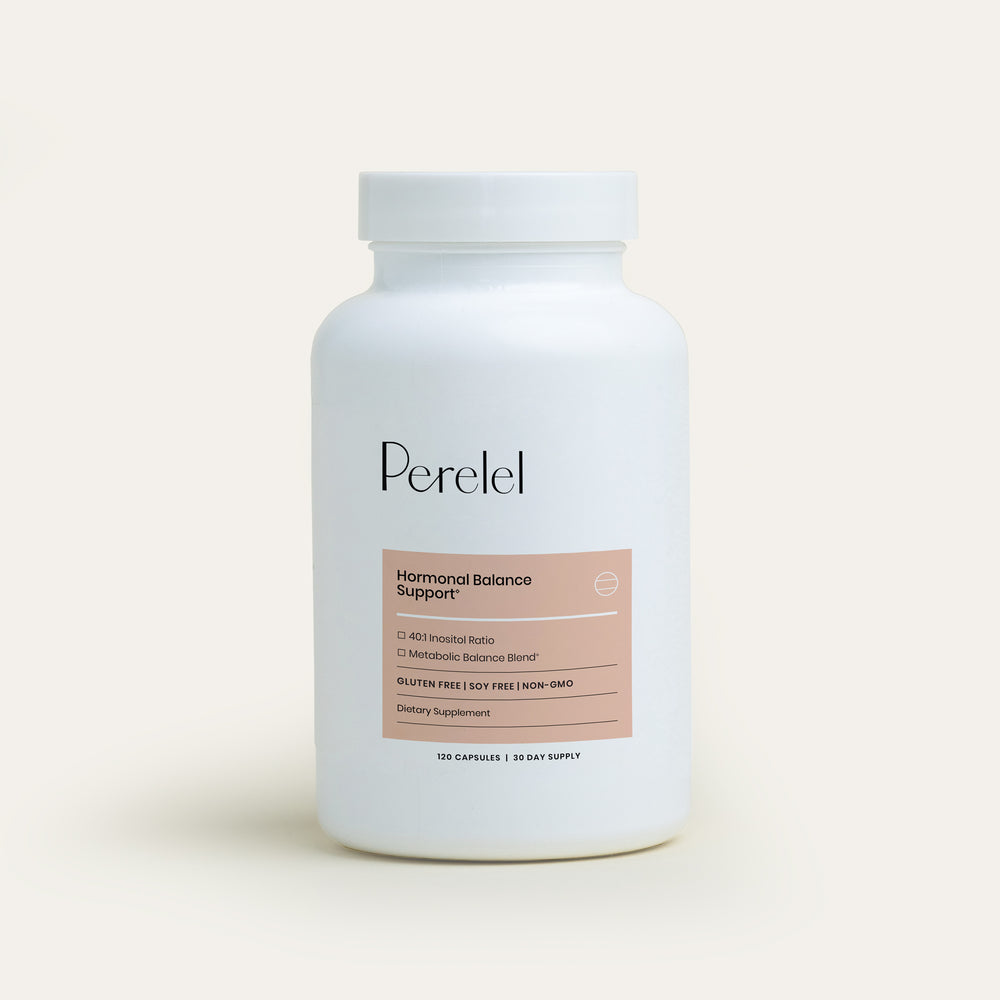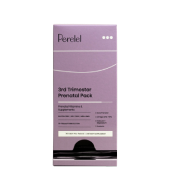If you’re in your late 30s or 40s, chances are you’ve asked yourself: Is this just a weird month, or is my body starting perimenopause? The two can look deceptively similar—missed or late periods, heavier or lighter bleeding, and mood swings that feel out of nowhere.
Here’s the good news: there are clear ways to tell the difference. It comes down to pattern, persistence, and the accompanying symptoms (hot flashes, night sweats, or sleep shifts, for example). With the right knowledge, you can identify whether it’s a short-term cycle blip or the beginning of the menopausal transition.
What Counts as a “Regular” Cycle
In your reproductive years, a “normal” cycle ranges from 21 to 35 days, with bleeding lasting two to seven days. Small fluctuations happen all the time—stress, illness, travel, or intense exercise can throw your period off. Usually, though, your cycle will self-correct within a month or two.
In contrast, cycles that repeatedly stretch long, arrive early, or become unpredictable without an obvious trigger are worth a second look.
What Perimenopause Actually Is
Perimenopause is the transition leading up to menopause, which is officially defined as twelve months without a menstrual period. This life stage typically begins in the early to mid-40s but can start earlier or later depending on genetics, health, and lifestyle. On average, perimenopause can last four years to over a decade.
The stages are described by the STRAW+10 criteria, the clinical gold standard for reproductive aging:
-
Early perimenopause: cycles become noticeably irregular, with differences of seven or more days between one cycle and the next.
-
Late perimenopause: cycles stretch out even further, often with gaps of sixty days or more.
These cycle-based markers are what separate perimenopause from regular monthly variability.
Early Perimenopause: The Subtle Shifts
In early perimenopause, you might still have regular periods most months, but small irregularities appear:
-
Periods that arrive earlier or later than expected by a week or more
-
Heavier or lighter bleeding than usual
-
New symptoms like mood swings, brain fog, or sleep changes
Dr. Heather Hirsch, an internist specializing in midlife women’s health, explains that these early shifts are often dismissed as “stress” or “just getting older.” But when you zoom out and notice a repeating pattern, that’s your body telling you it’s moving into a new hormonal phase.
Late Perimenopause: The More Obvious Signs
As ovarian function declines further, the changes become harder to miss. Cycles start spacing out dramatically, with skipped months followed by heavier or unexpected bleeding. Symptoms also intensify:
-
Hot flashes and night sweats
-
Vaginal dryness
-
Difficulty sleeping
-
More pronounced mood changes
-
Fatigue and brain fog
This is often the most disruptive stage of perimenopause, and it’s also when people most clearly see the difference between a “regular” cycle hiccup and a true transition.
Symptoms That Go Beyond PMS
PMS and perimenopause can overlap—both can cause irritability, bloating, and low mood. But perimenopause often introduces symptoms outside your normal pre-period window. For example, night sweats that wake you up at 3 a.m., or waves of heat during the day, aren’t part of a typical cycle.
Large studies like the SWAN cohort show that up to 80 percent of women experience vasomotor symptoms (hot flashes and night sweats) during perimenopause, making these among the most reliable differentiators.
$38.67
First 3 Mo
First 3 Months
$48.55
First 3 Mo
First 3 Months
$117.65
First 3 Mo
First 3 Months
Shop the Article:


Hormonal Balance Support*
Shop Now


Perimenopause Support Pack
Shop Now


Perimenopause Bundle
Why Blood Tests Don’t Give the Full Answer
It’s tempting to ask for lab work to confirm perimenopause, but hormone levels fluctuate too dramatically to be diagnostic. FSH, estradiol, and LH can swing from “normal” to “menopausal” within days. AMH (anti-Müllerian hormone) shows promise for estimating time to menopause across populations, but it isn’t precise enough for individual prediction.
That’s why clinicians still rely on your cycle history and symptoms—the clearest, most consistent indicators.
When Irregular Bleeding Is More Than Perimenopause
Not all irregular bleeding is hormonal transition. Call your clinician if you notice:
-
Bleeding that’s significantly heavier or longer than usual
-
Spotting between periods or after sex
-
Any bleeding after twelve consecutive months without a period
These patterns could signal fibroids, polyps, thyroid conditions, or, more rarely, precancerous changes. Perimenopause doesn’t exempt you from evaluation.
Perimenopause vs. a Regular Cycle Hiccup: The Key Differences
So how do you know if you’re dealing with perimenopause or just a regular cycle hiccup?
-
Regular cycle variability is usually short-lived, linked to a specific trigger (like stress or illness), and your period soon returns to baseline.
-
Perimenopause is defined by persistence: repeated seven-day swings in cycle length, skipped cycles of sixty days or more, and new symptoms like hot flashes, brain fog, or disrupted sleep.
It’s this combination of pattern and symptoms that sets perimenopause apart.
Do You Still Need Birth Control?
Yes—until menopause is confirmed. Ovulation becomes less predictable, but it doesn’t disappear until your cycle has stopped completely for twelve consecutive months. Menopausal hormone therapy (MHT), while highly effective for symptoms, does not double as contraception. Experts recommend continuing birth control into your early-to-mid 50s unless your clinician confirms menopause.
Supporting Yourself Through the Transition
Whether you’re in early or late perimenopause, there are ways to smooth the ride:
-
Track your cycles and symptoms. Apps or journals help you see the patterns clearly.
-
Prioritize sleep hygiene. Cooling your bedroom, cutting caffeine earlier, and maintaining a consistent bedtime can ease night sweats and insomnia.
-
Move your body. Strength training preserves muscle and bone density, while walking or dance supports mood and cardiovascular health.
-
Nourish well. Adequate protein, calcium, and vitamin D are especially important as bone loss accelerates.
-
Seek treatment if needed. MHT is the gold standard for hot flashes and night sweats, and non-hormonal therapies exist if MHT isn’t an option for you.
Perimenopause vs. Regular Periods: Key Takeaways
Perimenopause and regular cycle variability may look similar at first glance, but the difference lies in the pattern. If your cycles are occasionally late due to stress or travel, that’s normal variability. If they repeatedly shift by a week or more, or you go two months without bleeding and then have new symptoms like hot flashes or night sweats, you’re likely in perimenopause.
Your period is a messenger, not a mystery. By tracking patterns, listening to your symptoms, and working with a clinician when something feels off, you can tell the difference with confidence—and get the support you deserve in this transformative life stage.
References:
-
Harlow SD, et al. “Executive summary of STRAW+10: Stages of Reproductive Aging Workshop.” Menopause.2012.
-
Santoro N, et al. “Symptoms of the menopausal transition.” Endocrinology and Metabolism Clinics. 2015.
-
Freeman EW, et al. “Associations of hot flashes with depression and anxiety during the menopausal transition.” Journal of Women’s Health. 2014.
-
The Study of Women’s Health Across the Nation (SWAN). National Institutes of Health.
-
North American Menopause Society (NAMS). “2022 Hormone Therapy Position Statement.”
This article is for informational purposes only. It is not, nor is it intended to be, a substitute for professional medical advice, diagnosis, or treatment and we recommend that you always consult with your healthcare provider. To the extent that this article features the advice of physicians or medical practitioners, the views expressed are the views of the cited expert and do not necessarily represent the views of Perelel.




















